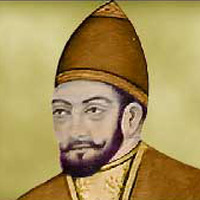dayaar-e-Gair me.n kaise tujhe sadaa dete
dayaar-e-Gair me.n kaise tujhe sadaa dete tuu mil bhii jaataa to tujhe ga.Nvaa dete [dayaar-e-Gair=alien/unknown place; ga.Nvaa denaa=to lose] tumhii.n ne ham ko sunaayaa na apanaa dukh varanaa duaa vo karate ke ham aasamaan hilaa dete hame.n ye zom rahaa ab ke vo pukaare.nge unhe.n ye zid thii ke har baar ham sadaa dete [zom=illusion] vo teraa Gam thaa ke taasiir mere lahaje kii ke jis ko haal sunaate use rulaa dete [taasiir=effect; lahajaa=style] tumhe.n bhulaanaa hii avval to dastaaras me.n nahii.n jo iKhtiyaar bhii hotaa to kyaa bhulaa dete [avval=firstly; dastaaras=within reach; iKhtiyaar=control] tumhaarii yaad ne ko_ii javaab hii na diyaa mere Khayaal ke aa.Nsuu rahe sadaa dete sama'to.n ko mai.n taa-umr kosataa Syed vo kuchh na kahate magar ho.nTh to hilaa dete [sama'to.n=hearing power; taa-umr=life long; kosanaa=blame]
